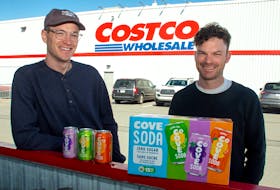I led a class last week at the Acadia Entrepreneurship Centre in Bridgewater, which was on the ‘Lean Canvas’ business plan
model.
This model breaks up your business idea into a number of small, manageable elements and is a very good way to start organizing your business concept.
The one element that struck me as I prepared for the class was how easy it was to fall into the trap of believing that your business will develop exactly as laid out in your business plan.
I was reminded of a time when I lived in Ghana, West Africa, where we used to regularly drive through what we referred to as the ‘Pillow Village,’ followed by the ‘Mattress Village,’ followed by the ‘Fufu Village,’ where individuals set up shop on the side of the road to sell their specific goods. We imagined the scenario where one individual thought, “I’m going to sell pillows,” then their neighbour thought, “Hey, he’s doing pretty well selling pillows, I’m going to sell pillows, too!” followed by his neighbour and so on and so forth until the entire village is selling identical pillows on the side of the road. However, at some point, one vendor will drop his price, which means others will follow suit and soon the products become ‘commoditized’ and there is not enough margin to go around.
Although very well illustrated in the example above, the same premise exists throughout the world … How do you ensure your product does not become a commodity and your business unprofitable?
This is a very pertinent question in Nova Scotia as the historically profitable wild blueberry business model is becoming unsustainable due to overproduction. For some farmers, they can’t even charge enough to justify harvesting their crop and so it just sits there rotting. In the United States, the Maine government agreed to purchase nine-million pounds of berries this year just to prop up the market.
There are quite a few options the entrepreneur can look at to address this issue, but for me, there are three key elements (using blueberries, wild and cultivated, as an example).
Specialize your product to ensure that you stand out from your competition. Grow only a variety that is specific to creating blueberry wine or has a high level of antioxidants for health products. If possible, look for other markets, such as export.
There are many ways to add value to a product: make it more accessible, make it cleaner, make it into a long-life product or transform the product in some way.
For blueberries, if everyone is selling them fresh, then freeze them; if everyone is selling them frozen, then make jam/wine. It may take a little more investment, but you will stand out from your competition.
If your speciality is doing one thing well (growing blueberries), then recognize your limitations and partner with a company that can help add value to your product or offering in a mutually profitable way.
No business model is sustainable forever; markets change, competitors and customers change and prices fluctuate. I’ve learned the hard way that the only way to keep a business alive is to constantly revisit your business model, identify what is working and what isn’t and adapt to the
markets.









